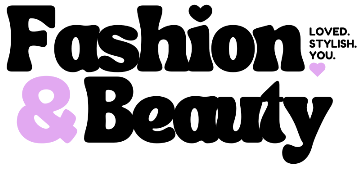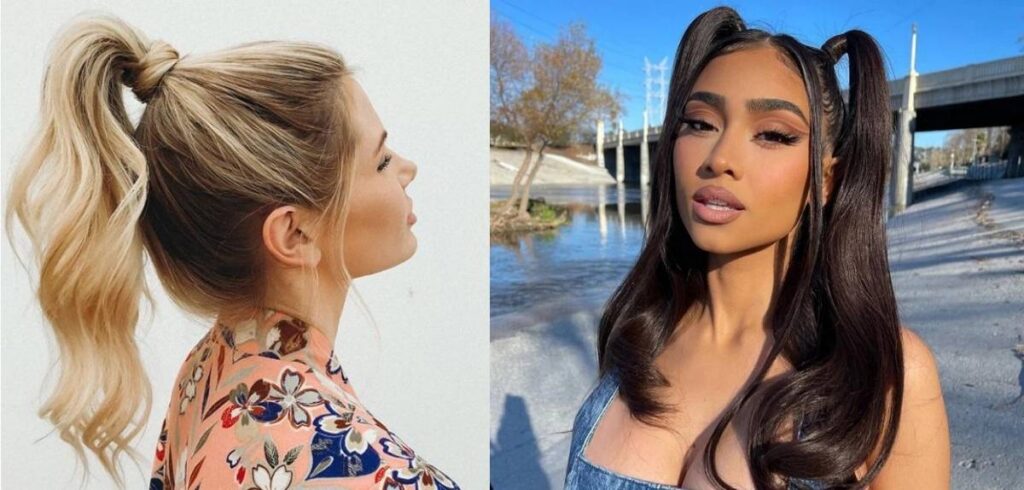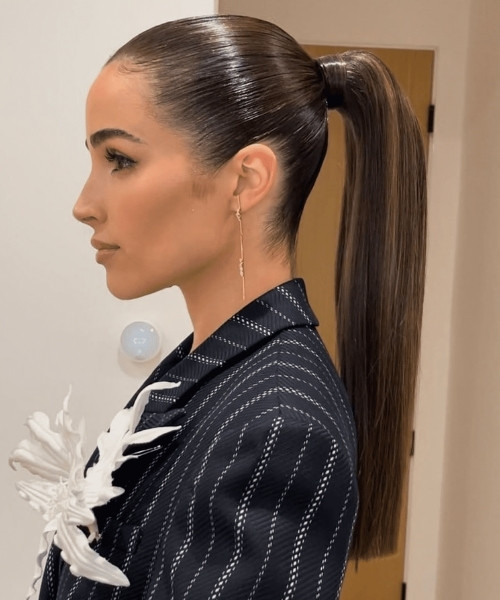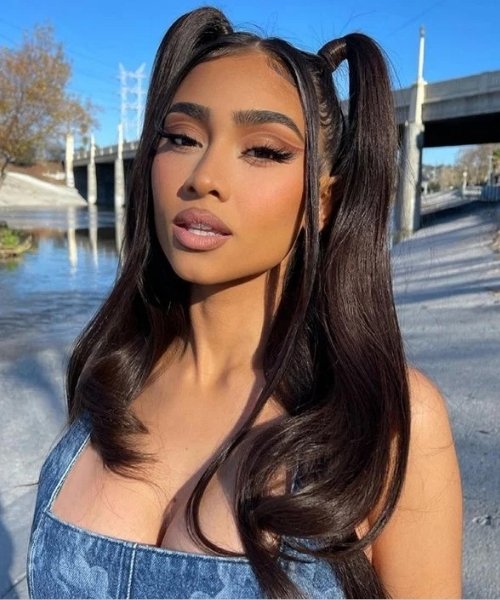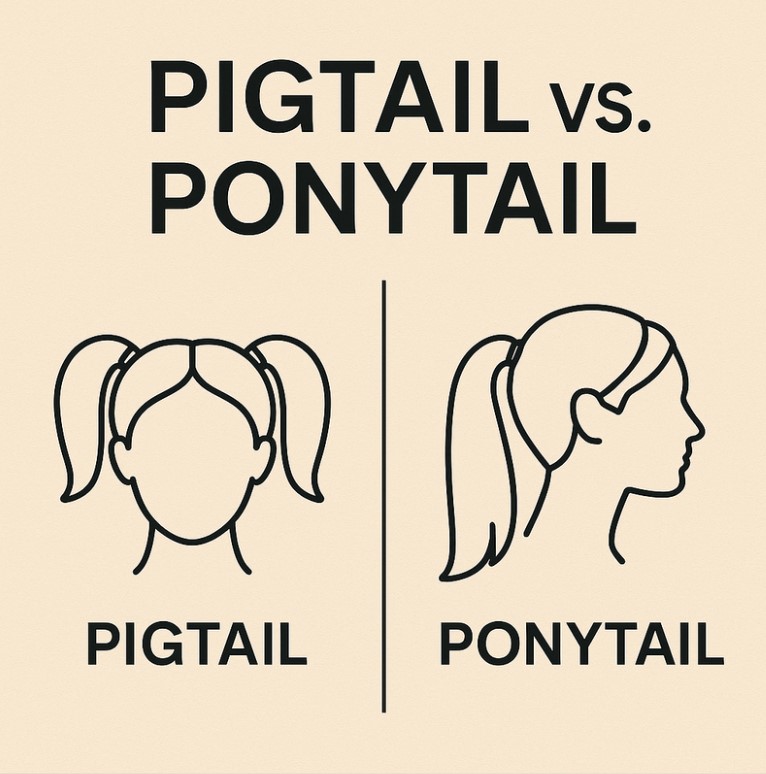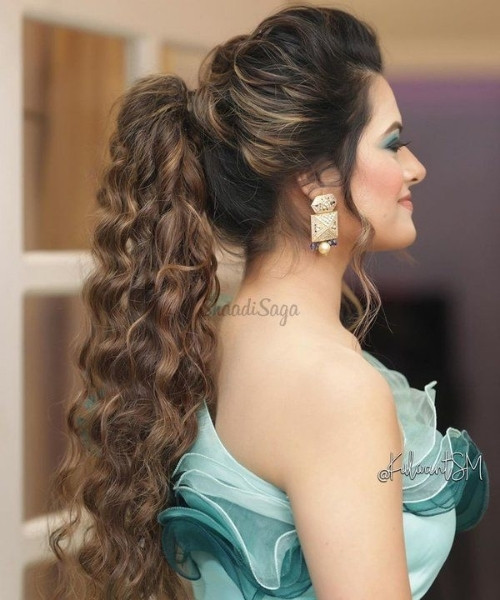When it comes to simple, go-to hairstyles, few are more iconic than the ponytail and the pigtail. These two styles have stood the test of time—not just because they’re cute or convenient, but because they can adapt to almost any look, from casual errands to red carpet glam.
At first glance, the difference may seem obvious: one tail vs. two. But when you look closer, you’ll notice other small but important differences—like placement, styling variations, and how each one is perceived. A ponytail is often sleek and mature, while pigtails tend to feel playful and youthful.
In this guide, we’ll help you compare both hairstyles side by side—definition, styling options, pros and cons—so you can decide which one fits your vibe best.
What Is a Ponytail?
Table of Contents
A ponytail is one of the easiest hairstyles to recognize and recreate. It’s made by gathering all your hair into a single bundle and securing it with a hair tie, usually at the back of the head. You can place it high, low, or right in the middle depending on the style you’re going for.
The name comes from its resemblance to—you guessed it—a pony’s tail. It swings, it bounces, and it works with nearly every outfit. Whether you’re hitting the gym or heading into a boardroom, the ponytail’s clean and tidy finish makes it one of the most versatile styles out there.
What Is a Pigtail?
A pigtail is created by dividing the hair into two equal sections and tying each one off on opposite sides of the head. Think symmetry: one on the left, one on the right. They can sit high near the crown for a playful look or lower near the nape for something more relaxed.
Here’s where it gets a little tricky. Some people use “pigtails” only when the sections are braided—others use it to mean any two bundles, braided or not. For this article, we’ll focus on the classic “two-tail” version, whether they’re braided or left loose.
Pigtails are often seen as fun, flirty, and even nostalgic. But don’t let that fool you—they can be just as trendy and edgy when styled right. From schoolyard charm to festival-ready looks, pigtails give you options.
Ponytail vs. Pigtail: A Quick Side-by-Side Comparison
Let’s break it down. Here’s how ponytails and pigtails stack up when it comes to structure, vibe, and versatility:
| Feature | Ponytail | Pigtail |
|---|---|---|
| Number of Sections | One | Two |
| Primary Placement | Back of the head (high, mid, or low) | Left and right sides (high or low) |
| Braiding Option | Usually unbraided, but can be braided | Often braided, but can also be left loose (commonly called “bunches”) |
| Aesthetic/Perception | Sleek, polished, sporty, professional | Youthful, playful, creative, sometimes nostalgic |
| Ease of Styling | Super quick — gather and tie | Slightly more effort — needs a neat center part and symmetry |
While ponytails are often the no-fuss, all-purpose hairstyle, pigtails bring more of a statement—whether it’s soft and sweet or bold and edgy. The choice often comes down to mood, outfit, or the occasion.
Style Variations and Versatility
Both ponytails and pigtails can be customized in fun, fashionable ways—whether you’re dressing up for a night out or just changing up your daily routine.
Ponytail Variations
- High Ponytail: Great for a lifted look. Think cheerleader chic or red carpet glam.
- Low Ponytail: Elegant and minimal. Perfect for work, weddings, or sleek styles.
- Side Ponytail: A nod to the ’80s, but still cute when paired with waves or curls.
- Bubble Ponytail: Add flair by spacing out hair ties down the length of the ponytail.
- Braided Ponytail: Adds texture and detail while keeping hair neat.
Pigtail Variations
- High Pigtails: Energetic and bold. Often seen at festivals or styled with bangs.
- Low Pigtails: Softer and subtler. Great for casual or vintage-inspired looks.
- Braided Pigtails: A timeless choice. Keeps hair secure and adds visual interest.
- Half-Up Pigtails: Trendy and cute—think K-pop stars or TikTok trends.
- Dutch/French Braided Pigtails: Edgier and more structured, ideal for workouts or style-forward outfits.
Each version brings its own vibe. Some feel fun and youthful; others lean more polished and put-together. It’s all about how you wear it.
Pros and Cons
Choosing between a ponytail and pigtails isn’t just about looks—it’s also about comfort, practicality, and how the style fits into your lifestyle. Let’s break down the benefits and drawbacks of each.
Ponytail
Pros:
- Versatile: Works for everything from the gym to the office to formal events.
- Quick and Easy: Takes less than a minute to do.
- Neat Look: Keeps hair off the face and neck, especially great in warm weather.
Cons:
- Tension Issues: Wearing high or tight ponytails regularly can lead to tension on the hairline, which may cause breakage or traction alopecia.
- Lack of Dimension: If your hair is fine or straight, it may look flat without added texture or volume.
Pigtails
Pros:
- Playful and Expressive: Easy to accessorize and perfect for casual or creative looks.
- Scalp-Friendly: Distributes hair weight evenly, which can reduce tension compared to a single ponytail.
- Great for Braiding: Makes styling and sectioning for braids or DIY haircuts simpler.
Cons:
- Not Always “Work-Appropriate”: May look too youthful or playful for professional environments.
- Takes Slightly More Time: Requires parting your hair evenly and balancing both sides for symmetry.
Choosing the Right Hairstyle
The perfect style isn’t just about what looks good—it’s also about what fits your day, your hair type, and your mood. Here’s how to decide between a ponytail and pigtails depending on the situation.
Suitability by Occasion
- Work or Formal Events:
A low ponytail or a sleek mid-level pony keeps things professional and polished. Pigtails? Best saved for more relaxed settings unless they’re low, neat, and paired with a sleek outfit. - Casual/Everyday Wear:
Both styles work well. A high ponytail gives you a sporty edge, while low pigtails offer a soft, laid-back vibe. - Workouts and Activities:
High ponytails keep hair off your neck, ideal for intense movement. But braided pigtails stay in place better, especially during cardio or outdoor sports. - Trendy or Fashion-Forward Looks:
Try a bubble ponytail or half-up pigtails. These are stylish, bold, and great for photos or events where you want to stand out.
Other Considerations
- Hair Length & Texture:
Ponytails usually require medium to long hair. Pigtails, however, can work even on shorter cuts since each section needs less length. Curly or thick hair? Braids and textured finishes add dimension to both styles. - Face Shape:
- Round Faces: High ponytails or high pigtails elongate the face.
- Long Faces: Low pigtails or side ponytails can add width and softness.
- Oval Faces: Lucky you—both styles usually suit you well.
Conclusion: Which One Should You Choose?
So—pigtail or ponytail? It all comes down to one question: what look are you going for today?
If you want something sleek, quick, and universally accepted (even in boardrooms), a ponytail is your go-to. It’s versatile, timeless, and pairs with just about everything. But if you’re feeling playful, creative, or just want to switch things up, pigtails offer a fun, youthful twist—and they’re just as stylish when done right.
Both styles have stood the test of time for good reason. There’s no one-size-fits-all answer, and honestly, you don’t have to choose forever. Switch it up. Experiment. Add braids, scrunchies, or barrettes. Make each look your own.
Ultimately, both styles are classics that offer convenience, versatility, and a fresh look—just pick the one that matches your mood.
Frequently Asked Questions
What’s the main difference between a ponytail and pigtails?
A ponytail is a single bundle of hair tied at the back of the head, while pigtails are two equal sections tied on either side. Ponytails are often sleek and mature; pigtails lean more playful or youthful.
Are pigtails only for kids?
Not at all. While pigtails do have a youthful vibe, modern versions—like braided or low pigtails—are stylish and age-appropriate for teens and adults alike. It’s all about how you style them.
Which hairstyle is better for workouts?
A high ponytail keeps hair off your neck and is great for quick movement, but braided pigtails stay more secure during intense workouts like running or HIIT.
Do ponytails damage hair?
They can if worn too tightly or in the same spot daily. This tension may lead to breakage or traction alopecia over time. Try to vary the height and tightness.
Can short hair be styled into pigtails?
Yes. Since each pigtail only needs half your hair, shorter styles often work well—especially when braided or styled into mini pigtails near the crown.
